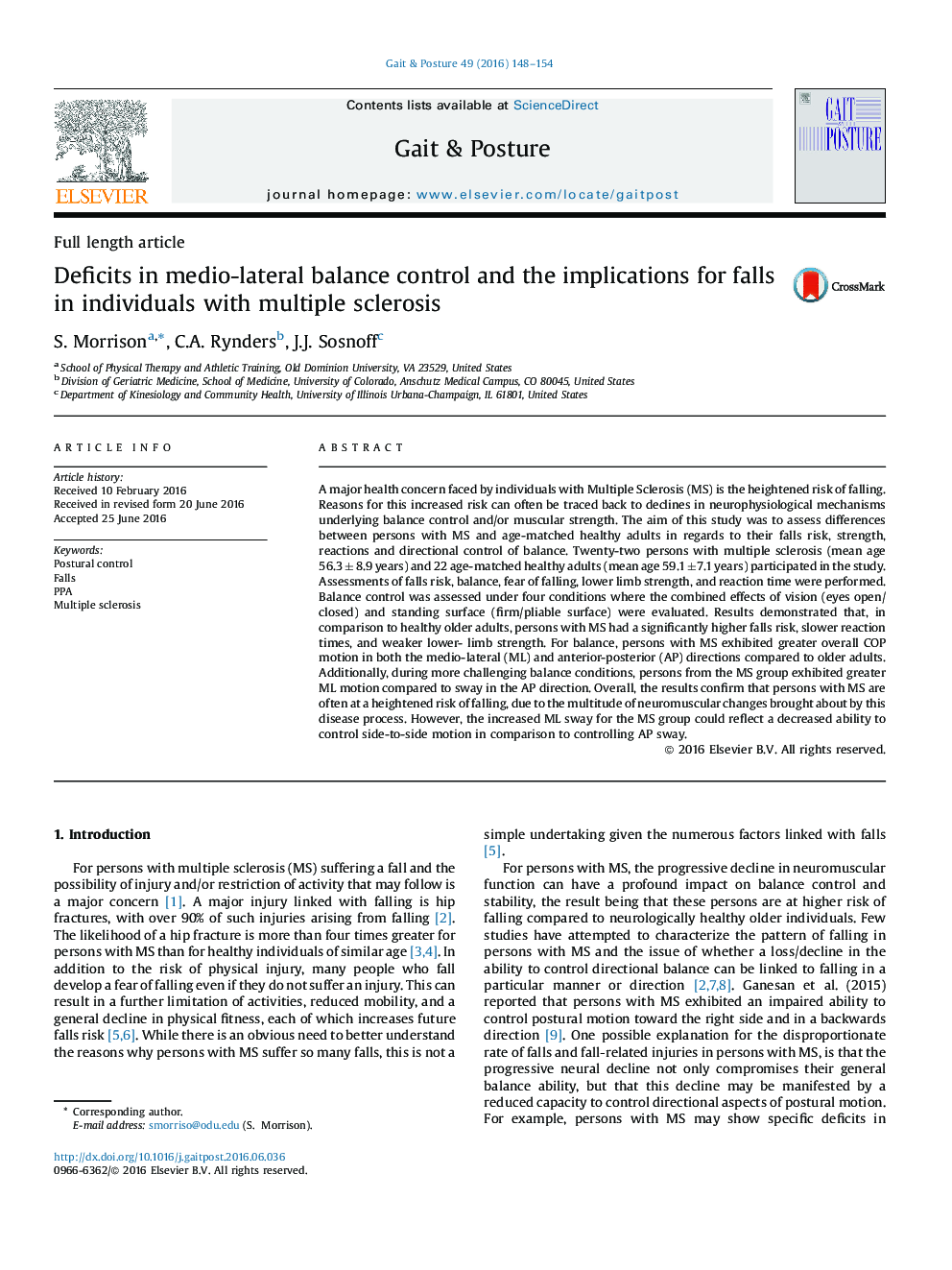| کد مقاله | کد نشریه | سال انتشار | مقاله انگلیسی | نسخه تمام متن |
|---|---|---|---|---|
| 6205426 | 1603846 | 2016 | 7 صفحه PDF | دانلود رایگان |
- Falls are a major healthy issue for persons with multiple sclerosis (MS).
- The MS group were at greater falls risk and had greater postural motion compared to age-matched healthy controls.
- Persons with MS exhibited greater postural sway in the medio-lateral direction compared to anterior-posterior motion.
- This increased ML sway for the MS group may be linked to reduced ability to control the hip abductor/adductor muscles.
A major health concern faced by individuals with Multiple Sclerosis (MS) is the heightened risk of falling. Reasons for this increased risk can often be traced back to declines in neurophysiological mechanisms underlying balance control and/or muscular strength. The aim of this study was to assess differences between persons with MS and age-matched healthy adults in regards to their falls risk, strength, reactions and directional control of balance. Twenty-two persons with multiple sclerosis (mean age 56.3 ± 8.9 years) and 22 age-matched healthy adults (mean age 59.1 ± 7.1 years) participated in the study. Assessments of falls risk, balance, fear of falling, lower limb strength, and reaction time were performed. Balance control was assessed under four conditions where the combined effects of vision (eyes open/closed) and standing surface (firm/pliable surface) were evaluated. Results demonstrated that, in comparison to healthy older adults, persons with MS had a significantly higher falls risk, slower reaction times, and weaker lower- limb strength. For balance, persons with MS exhibited greater overall COP motion in both the medio-lateral (ML) and anterior-posterior (AP) directions compared to older adults. Additionally, during more challenging balance conditions, persons from the MS group exhibited greater ML motion compared to sway in the AP direction. Overall, the results confirm that persons with MS are often at a heightened risk of falling, due to the multitude of neuromuscular changes brought about by this disease process. However, the increased ML sway for the MS group could reflect a decreased ability to control side-to-side motion in comparison to controlling AP sway.
Journal: Gait & Posture - Volume 49, September 2016, Pages 148-154
